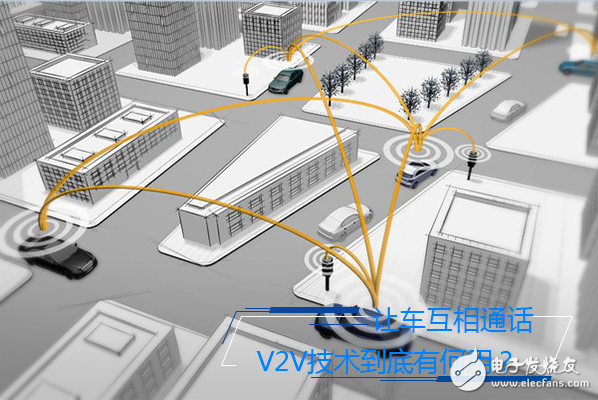As we all know, intersections have always been accident-prone areas. So is it possible to avoid the tragedy through technical means? The United States has issued a draft to reduce traffic accidents by deploying V2V (vehicletovehicle) technology on light vehicles.
Transportation Minister Anthony Fox said: "Once deployed, vehicle-to-vehicle communication will provide 360-degree road condition awareness and help us enhance vehicle safety." The National Highway Traffic Safety Administration estimates vehicle-to-vehicle and vehicle-to-infrastructure Communication technology (V2I) will be able to reduce up to 80% of non-damaging collisions.

V2V communication requires a wireless network in which cars transmit information to each other telling them what they are doing, including speed, location, driving direction, braking, and so on. V2V technology uses dedicated short-range communication (DSRC), a standard set up by institutions like FCC and ISO. Sometimes it will be described as a WiFi network, because one frequency that may be used is 5.9 GHz, which is also the frequency used by WiFi. More precisely, the DSRC is a WiFi-like network with a coverage of up to 300 meters.
V2V is a mesh network in which nodes (cars, intelligent traffic lights, etc.) can transmit, capture, and forward signals. A jump of 5-10 nodes on the network can collect traffic conditions one mile away. This has enough time for most drivers.
At the beginning of development, V2V may be a flashing red light warning for the driver or indicate which direction is dangerous, of course, these are still in the concept stage. There are already thousands of test cars, and most prototypes are ready to brake or turn to avoid dangerous levels.
Traffic signals or other fixed equipment is called V2I, which is the car-infrastructure. There are many other claims about V2V. Some vendors call it Car-to-X, as well as "internet of cars" and "connected car". It seems that V2V is coming to the fore.

Unmanned driving is also called automatic driving. Some of the current automatic driving functions include adaptive cruise control. Manufacturers hope to get drones on the road at the end of this decade.
Driverless cars use a lot of sensors and radars to avoid pedestrians, automatic cornering brakes, and maintaining distance. V2V communication will make driverless smarter, even if the best radar can only detect the situation within 5 seconds ahead, and V2V can expand the range to a wider extent, so that the car and the driver can make better judgments.
The hand-held electric fan is intelligently controlled and adjusted in three gears, and the wind power can be adjusted according to your own needs. The lithium battery of the rechargeable fan has strong versatility, recyclable charging, low use cost, simple and elegant appearance, firm structure, small size, light weight and convenience. More unique designs for student travel and outdoor sports bring more comfort to more consumers.
Handheld Fan,Portable Hand Fan,Mini Hand Fan,Mini Handheld Fan
Guangdong Aiyimi Electronic Technology Co., Ltd. , https://www.seventreasuresfan.com